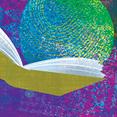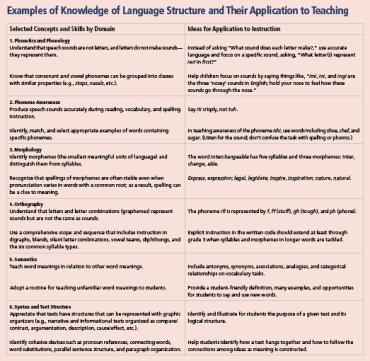The most fundamental responsibility of schools is teaching students to read. Because reading affects all other academic achievement and is associated with social, emotional, economic, and physical health, it has been the most researched aspect of human cognition. By the year 2000, after decades of multidisciplinary research, the scientific community had achieved broad consensus regarding these questions: How do children learn to read? What causes reading difficulties? What are the essential components of effective reading instruction and why is each important? How can we prevent or reduce reading difficulties? Two decades later, hundreds of additional studies have refined and consolidated what we know about bolstering reading achievement, especially for students at risk.
Scientists use increasingly sophisticated technology that can picture the brain’s activation patterns or measure split-second reactions to speech or print. New statistical methods can document the complicated interactions of many factors as students develop reading skills. Fine-grained analyses illuminate the nature of individual differences and individual responses to instruction. These advanced investigative techniques have confirmed and extended the bedrock findings about reading and effective teaching of reading that were known 20 years ago. Evidence to guide our practices is stronger than it has ever been.
Unfortunately, much of this research is not yet included in teacher preparation programs, widely used curricula, or professional development, so it should come as no surprise that typical classroom practices often deviate substantially from what is recommended by our most credible sources. As a result, reading achievement is not as strong as it should be for most students, and the consequences are particularly dire for students from the least advantaged families and communities.
This we know: reading failure can be prevented in all but a small percentage of children with serious learning disorders. It is possible to teach most students how to read if we start early and follow the significant body of research showing which practices are most effective. Students living in poverty, students of color, and students who are eligible for remedial services can become competent readers—at any age. Persistent “gaps” between more advantaged and less advantaged students can be narrowed and even closed. Fundamentally, these gaps are the result of differences in students’ opportunities to learn—not their learning abilities.
Although educators have long understood the importance of literacy, teaching children to read is very complex. Far too many children have trouble reading and writing. About 20 percent of elementary school students nationwide have serious problems learning to read; at least another 20 percent are at risk for not meeting grade-level expectations.1 For children growing up in underresourced communities and attending underresourced schools, the incidence of reading failure is astronomical and completely unacceptable. Students who are African American, Hispanic, learning English, and/or from impoverished homes fall behind and stay behind in far greater proportion than students who are white and middle class. The rate of weak reading skills in these groups is 60–70 percent, according to the National Assessment of Educational Progress.2
The tragedy here is that most reading failure is unnecessary. We now know that classroom teaching itself, when it includes a range of research-based components and practices, can prevent and mitigate reading difficulty. Although home factors do influence how well and how soon students read, informed classroom instruction that targets specific language, cognitive, and reading skills beginning in kindergarten enhances success for all but a very small percentage of students with learning disabilities or severe dyslexia. Researchers now estimate that 95 percent of all children can be taught to read by the end of first grade, with future achievement constrained* only by students’ reasoning and listening comprehension abilities.3
While parents, tutors, and the community can contribute to reading success, classroom instruction is the critical factor in preventing reading problems and must be the primary focus for change.4 To be clear: although the day-to-day work is teachers’ responsibility, students’ reading success is our shared responsibility. From preparation programs to standards and assessments to curricula and professional development, the policies and systems currently impacting how reading is taught need to improve—dramatically and rapidly. Teaching reading is rocket science. But it is also established science, with clear, specific, practical instructional strategies that all teachers should be taught and supported in using.
Research-Validated Ideas for Instruction
A well-validated concept that should underpin the design of instruction is called the Simple View of Reading.5 It states that reading comprehension is the product of word recognition and language comprehension. Without strong skills in either domain, an individual’s reading comprehension will be compromised.
A reader’s recognition of printed words must be accurate and automatic to support comprehension. The development of automatic word recognition depends on intact, proficient phoneme awareness, knowledge of sound-symbol (phoneme-grapheme) correspondences, recognition of print patterns such as recurring letter sequences and syllable spellings, and recognition of meaningful parts of words (morphemes).6 Young readers progress by gradually learning each of these ways that our print system represents language, and then applying what they know during ample practice with both oral and silent reading. If reading skill is developing successfully, word recognition gradually becomes so fast that it seems as if we are reading “by sight.” The path to that end, however, requires knowing how print represents sounds, syllables, and meaningful word parts; for most students, developing that body of knowledge requires explicit instruction and practice over several grades.7 While some students seem to figure out how the print system works through incidental exposure, most do not.
Language comprehension, the other essential domain that underlies reading comprehension, depends on background knowledge, vocabulary, ability to decipher formal and complex sentence patterns, and recognition of the devices that hold a text together.8 Furthermore, language comprehension is facilitated by metacognitive skills such as monitoring whether reading is making sense and choosing to act if it does not. The language comprehension factor in overall reading achievement becomes more and more important from about fourth grade onward.9 From preschool through high school, students gain vital exposure to a variety of text forms, language patterns, background knowledge, and vocabulary both by listening to text read aloud and by reading itself.
The implications of the Simple View of Reading should be self-evident: reading and language arts instruction must include deliberate, systematic, and explicit teaching of word recognition and must develop students’ subject-matter knowledge, vocabulary, sentence comprehension, and familiarity with the language in written texts. Each of these larger skill domains depends on the integrity of its subskills.
Learning to read is a complex achievement, and learning to teach reading requires extensive knowledge and skills across the components of word recognition, language comprehension, spelling, and writing. Consider what the classroom demands of the teacher. Children’s interest in reading must be stimulated through regular exposure to interesting books and through discussions in which students respond to many kinds of texts. For best results, the teacher must instruct the majority of students directly, systematically, and explicitly to decipher words in print, all the while keeping in mind the ultimate purpose of reading, which is to learn, enjoy, and understand. To accommodate children’s variability, the teacher must assess children and tailor lessons to individuals or groups. This includes interpreting errors, giving corrective feedback, selecting examples to illustrate concepts, explaining new ideas in several ways, and connecting word recognition instruction to meaningful reading and writing.
Some children learn language concepts and their application very easily in spite of incidental teaching, but others never learn unless they are taught in an organized, systematic, efficient way by a knowledgeable teacher using a well-designed instructional approach. Children of average ability might learn enough about reading to get by if their instruction is haphazard; with systematic research-based instruction, those students could achieve much more, such as the appreciation for language structure that supports learning words from context, perceiving subtle differences in meaning, or refining language use.
Toward a Curriculum on the Science of Reading
A core curriculum on effective literacy instruction for pre-service and in-service teacher education would, of course, be supplemented and honed over time, but its goal is to bring continuity, consistency, quality, and comprehensiveness to the many different programs, organizations, and systems through which aspiring and current teachers receive information about how to teach reading. Given the current science of reading, this core should be divided roughly into the following four areas:
- Knowing the basics of reading psychology and development;
- Understanding language structure for both word recognition and language comprehension;
- Applying best practices in all components of reading instruction; and
- Using validated, reliable, efficient assessments to inform classroom teaching.
This excerpt offers an introduction to the first two areas. For a detailed discussion of all four areas, please see the full report.
1. Reading Psychology and Development
Learning to read is not natural or easy for most children. Unlike spoken language, which is learned with almost any kind of contextual exposure, reading is an acquired skill. Although surrounding children with books will support reading development, and a “literature-rich environment” is highly desirable, it is not sufficient for learning to read. Neither will exposure to print ordinarily be sufficient for learning to spell, unless organized practice is provided. Thus, teachers must be reflective, knowledgeable, and intentional about the content they are teaching—that is, the symbol system (orthography) itself and its relationship to meaning.
Good readers do not skim and sample the text when they scan a line in a book. They process the letters of each word in detail, although they do so very rapidly and unconsciously. Those who comprehend well accomplish letter-wise text scanning with relative ease and fluency. When word identification is fast and accurate, a reader has ample mental energy to think over the meaning of the text. Knowledge of sound-symbol mapping is crucial in developing word recognition: the ability to sound out and recognize words accounts for about 80 percent of the variance in first-grade reading comprehension and continues to be a major (albeit diminishing) factor in text comprehension as students progress through the grades (and students’ background knowledge and vocabulary become ever-larger factors in comprehending academic texts).11
The ability to sound out words is, in fact, a major underpinning that allows rapid recognition of words. (This recognition is so fast that some people mistakenly believe it is happening “by sight.”) Before children can easily sound out or decode words, they must have at least an implicit awareness of the speech sounds that are represented by symbolic units (letters and their combinations). Children who learn to read well are sensitive to linguistic structure, recognize redundant patterns, and connect letter patterns with sounds, syllables, and meaningful word parts quickly, accurately, and unconsciously. Effective teaching of reading entails these concepts, presenting them in a sequence from simple and consistent to complex and variable.
The word-recognition component of reading is most closely dependent on the phonological aspect of language processing.12 Phonological language skills include awareness of bits of speech or linguistic elements within words: consonant and vowel phonemes, spoken syllables, grammatical endings, and meaningful word parts (morphemes). Awareness of these linguistic elements in spoken language is essential for making sense of print because our alphabetic writing system represents language at all these levels. When students cannot rapidly associate the sounds, syllables, and/or morphemes in spoken words with printed symbols, they will not be able to store words in their mental dictionaries. Conversely, a new word that is decoded accurately through phonological analysis can be pronounced and remembered, even if its meaning is not yet known.
Beginning reading instruction of necessity will focus on teaching students how to read and write words, following a systematic and logical sequence. When appropriate, the emphasis will shift to increasing reading volume. Combining research on reading, cognitive science related to the role of knowledge in thinking, and practice-based wisdom, it appears that opportunities for wide reading are best provided within a knowledge-building curriculum in which text readings are linked by a theme or topic.13 Ironically, while background knowledge can be gained from reading, it is also true that those who already know more about a topic make better inferences and retain meanings better than those who know little about it. Therefore, reading practice should be linked to or embedded within the study of subjects including science, history, literature, and the arts. Interpretive strategies that facilitate comprehension—including summarizing, questioning, predicting outcomes, and monitoring one’s own understanding—are best used in the service of learning defined curricular content.14 Moreover, writing in response to reading is one of the best ways to enhance reading comprehension.15
2. Language Structure
Expert teaching of reading requires knowledge of language structure at all levels.16 Without such knowledge, teachers are not able to respond insightfully to student errors, choose examples for concepts, explain and contrast words and their parts, or judge what focus is needed in a lesson. The table below provides examples of key concepts of language structure and how they apply to instruction.
(click image to expand)
Experts agree that children who initially are at risk for failure are saved, in most cases, by instruction that directly teaches the specific foundational language skills on which proficient reading depends.17 Effective teachers of reading raise awareness and proficiency through every layer of language organization, including sounds, syllables, meaningful parts (morphemes), phrases, sentences, paragraphs, and various genres of text. Their teaching strategies are explicit, systematic, and engaging.18 They also balance language skill instruction with its application to purposeful daily writing and reading, no matter what the skill level of the learner. Middle- and upper-grade children who are weak readers can be brought up to grade level with appropriate instruction (although the time, effort, and emotional strain for children and teachers involved is considerably greater than that required to teach younger children, so offering research-based instruction in the early grades must remain a top priority).
A rich and meaningful curriculum, in which students are exposed to a variety of texts as they learn concepts in science, literature, social studies, history, the arts, and culture, should provide the context for developing reading and writing skills. Comprehension strategies should not be taught in isolation but used as necessary to enhance understanding of text assigned for content learning. Useful comprehension strategies to embed in content reading include prediction of outcomes, summarizing, clarification, questioning, and visualization; these can be modeled explicitly by the teacher and practiced overtly if students are not comprehending well or if they approach reading comprehension passively. Vocabulary is best taught with a variety of complementary methods, both direct and incidental, designed to explore the relationships among words and the relationships among word structure, origin, and meaning. Of course, children also benefit from access to full libraries and incentives to read independently.
The fact that teachers need better preparation, professional development, and resources to carry out deliberate instruction in reading, spelling, and writing should prompt action rather than criticism. It should highlight the chronic gap between what teachers need and what they have been given. Just about all children can be taught to read and deserve no less from their teachers. Teachers, in turn, deserve no less than the knowledge, skills, and supported practice that will enable their teaching to succeed. There is no more important challenge for education to undertake.
Louisa C. Moats has been a teacher, psychologist, researcher, graduate school faculty member, and author of many influential scientific journal articles, books, and policy papers on the topics of reading, spelling, language, and teacher preparation. After 15 years as a licensed psychologist specializing in evaluation and consultation with individuals who experienced reading, writing, and language difficulties, she served as a site director of the National Institute of Child Health and Human Development’s Early Interventions Project and research advisor and consultant with Sopris Learning.
*It is important to note that students’ reasoning and comprehension abilities can also be enhanced through informed instruction. As students’ subject-matter knowledge and vocabulary grow, so will their capacity to think critically. (return to article)
Endnotes
1. R. H. Good, D. C. Simmons, and E. Kame’enui, “The Importance and Decision-Making Utility of a Continuum of Fluency-Based Indicators of Foundational Reading Skills for Third-Grade High-Stakes Outcomes,” Scientific Studies of Reading 5 (2001): 257–288; and National Assessment of Educational Progress, “Nation’s Report Card: How Did U.S. Students Perform on the Most Recent Assessments?,” U.S. Department of Education, National Center for Education Statistics, www.nationsreportcard.gov.
2. National Assessment of Educational Progress, “Nation’s Report Card.”
3. D. A. Kilpatrick, Essentials of Assessing, Preventing, and Overcoming Reading Difficulties (Hoboken, NJ: Wiley, 2015); L. Lim et al., “Using the MULTILIT Literacy Instruction Program with Children Who Have Down Syndrome,” Reading and Writing 32 (2019): 2179–2200; P. G. Mathes et al., “The Effects of Theoretically Different Instruction and Student Characteristics on the Skills of Struggling Readers,” Reading Research Quarterly 40 (2005): 148–182; and J. K. Torgesen, “Avoiding the Devastating Downward Spiral: The Evidence That Early Intervention Prevents Reading Failure,” American Educator 28, no. 3 (2004): 6–9, 12–13, 17–19, 45–47.
4. B. Foorman et al., Foundational Skills to Support Reading for Understanding in Kindergarten through 3rd Grade (Washington, DC: National Center for Educational Evaluation and Regional Assistance, 2016), https://whatworks.ed.gov; and B. Foorman et al., “The Impact of Instructional Practices in Grades 1 and 2 on Reading and Spelling Achievement in High Poverty Schools,” Contemporary Educational Psychology 31 (2006): 1–29.
5. H. W. Catts, S. M. Adlof, and S. E. Weismer, “Language Deficits in Poor Comprehenders: A Case for the Simple View of Reading,” Journal of Speech, Language, and Hearing Research 49, no. 2 (2006): 278–293; and P. Gough and W. E. Tunmer, “Decoding, Reading, and Reading Disability,” Remedial and Special Education 7, no. 1 (1986): 6–10.
6. L. Ehri, “Orthographic Mapping in the Acquisition of Sight Word Reading, Spelling Memory, and Vocabulary Learning,” Scientific Studies of Reading 18 (2014): 5–21; and Kilpatrick, Essentials of Assessing.
7. L. Ehri et al., “Systematic Phonics Instruction Helps Students Learn to Read: Evidence from the National Reading Panel’s Meta-Analysis,” Review of Educational Research 71 (2001): 393–447.
8. K. Cain and J. Oakhill, eds., Children’s Comprehension Problems in Oral and Written Language: A Cognitive Perspective (New York: Guilford, 2007); K. Nation, “Children’s Reading Comprehension Difficulties,” in The Science of Reading: A Handbook, ed. M. J. Snowling and C. Hulme (Oxford, UK: Blackwell, 2005), 248–266; and J. Oakhill, K. Cain, and C. Elbro, Understanding and Teaching Reading Comprehension: A Handbook (New York: Routledge, 2015).
9. F. R. Vellutino et al., “Components of Reading Ability: Multivariate Evidence for a Convergent Skills Model of Reading Development,” Scientific Studies of Reading 11, no. 1 (2007): 3–32.
10. R. Allington, “What Really Matters When Working with Struggling Readers,” The Reading Teacher 66, no. 7 (2013): 520–530; and F. Smith, Unspeakable Acts, Unnatural Practices: Flaws and Fallacies in “Scientific” Reading Instruction (Portsmouth, NH: Heinemann, 2003).
11. C. Schatschneider et al., “Kindergarten Prediction of Reading Skills: A Longitudinal Comparative Analysis,” Journal of Educational Psychology 96 (2004): 265–282; and Vellutino et al., “Components of Reading Ability.”
12. S. Brady, “Efficacy of Phonics Teaching for Reading Outcomes: Implications from Post-NRP Research,” in Explaining Individual Differences in Reading, ed. S. Brady, D. Braze, and C. Fowlers (London: Psychology Press, 2011), 69–96; S. Brady, “The 2003 IDA Definition of Dyslexia: A Call for Changes,” Perspectives on Language and Literacy 45, no. 1 (2019): 15–21; A. Kjeldsen et al., “Gains from Training in Phonological Awareness in Kindergarten Predict Reading Comprehension in Grade 9,” Scientific Studies of Reading 18, no. 6 (2014): 452–468; I. Y. Liberman, D. Shankweiler, and A. M. Liberman, “The Alphabetic Principle and Learning to Read,” in Phonology and Reading Disability: Solving the Reading Puzzle, ed. D. Shankweiler and A. Liberman (Ann Arbor, MI: University of Michigan Press, 1989); and H. S. Scarborough and S. A. Brady, “Toward a Common Terminology for Talking about Speech and Reading: A Glossary of ‘Phon’ Words and Some Related Terms,” Journal of Literacy Research 34, no. 3 (2002): 299–336.
13. E. D. Hirsch, Why Knowledge Matters: Rescuing Our Children from Failed Educational Theories (Cambridge, MA: Harvard Education Press, 2016); and N. Wexler, The Knowledge Gap: The Hidden Cause of America’s Broken Education System—and How to Fix It (New York: Penguin Random House, 2019).
14. D. T. Willingham, “The Usefulness of Brief Instruction in Reading Comprehension Strategies,” American Educator 30, no. 4 (Winter 2006–2007): 39–50.
15. S. Graham and M. Herbert, Writing to Read: Evidence for How Writing Can Improve Reading (Washington, DC: Alliance for Excellent Education, 2010).
16. L. C. Moats, Speech to Print: Language Essentials for Teachers (Baltimore, MD: Brookes Publishing, 2020); C. Snow, P. Griffin, and S. Burns, Knowledge to Support Teaching of Reading: Preparing Teachers for a Changing World (San Francisco: Jossey Bass, 2005); and E. K. Washburn, R. M. Joshi, and E. S. Binks-Cantrell, “Teacher Knowledge of Basic Language and Concepts and Dyslexia,” Dyslexia 17 (2011): 165–183.
17. Moats, Speech to Print; L. Spear-Swerling, “Structured Literacy and Typical Literacy Practices: Understanding Differences to Create Instructional Opportunities,” Teaching Exceptional Children 51 (2019): 201–211; and G. P. Wallach, S. Charlton, and J. C. Bartholomew, “The Spoken-Written Comprehension Connection: Constructive Intervention Strategies,” in Handbook of Language and Literacy: Development and Disorders, ed. C. A. Stone et al. (New York: Guilford, 2014), 485–501.
18. A. L. Archer and C. A. Hughes, Explicit Instruction: Effective and Efficient Teaching (New York: Guilford, 2011); and Spear-Swerling, “Structured Literacy.”






